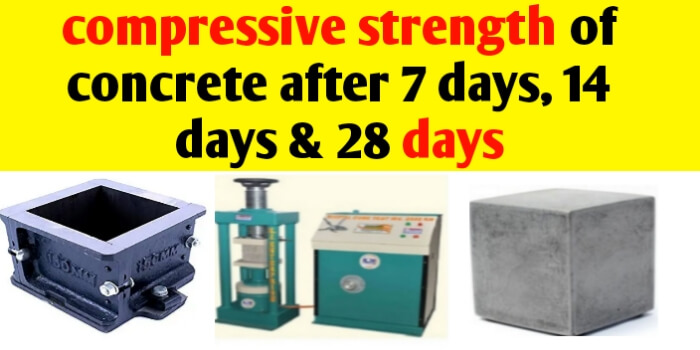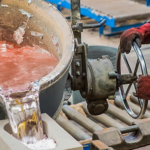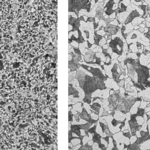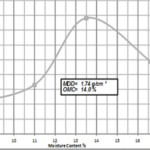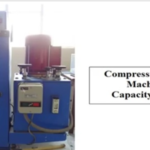Introduction
Out of many test applied to the concrete, this is the utmost important which gives an idea about all the characteristics of concrete. By this single test one judge that whether Concreting has been done properly or not. For cube test two types of specimens either cubes of 15 cm x 15 cm x 15 cm or 10cm x 10 cm x 10 cm depending upon the size of aggregate are used. Concrete is poured in the mould and tampered properly so as not to have any voids. After 24 hours these moulds are removed and test specimens are put in water for curing. The top surface of these specimens should be made even and smooth. This is done by putting cement paste and spreading smoothly on whole area of specimen. These specimens are tested by compression testing machine after 7 days curing or 28 days curing. Load should be applied gradually at the rate of 140 kg/cm2 per minute till the Specimens fails. Load at the failure divided by area of specimen gives the compressive strength of concrete.
Preparation Of Cube Specimens
Mixing: Mix the concrete either by hand or in a laboratory batch mixer
Sampling:
- Clean the mounds and apply oil
- Fill the concrete in the molds in layers approximately 5cm thick
- Compact each layer with not less than 35strokes per layer using a tamping rod (steel bar 16mm diameter and 60cm long, bullet pointed at lower end)
- Level the top surface and smoothen it with a trowel
Curing: The test specimens are stored in moist air for 24hours and after this period the specimens are marked and removed from the molds and kept submerged in clear fresh water until taken out prior to test.
Precautions: The water for curing should be tested every 7days and the temperature of water must be at 25 – 27oC.
Objective(s) of the Experiment
The test is carried out to determine the compressive strength of hardened concrete
Equipment and Materials Needed
The machine used for this test is The Compression testing machine or Crushing Machine. Two types of Compression testing machine are available at the Geotechnics and Structure Centre: Digital Crushing Machine and Analog type. The digital crushing machine requires fewer calculations as both the load applied and the resulting stress will be displayed accurately on its screen. It is more accurate as there cannot be parallax error since it is digital.

Procedures
- Remove the specimen from water after specified curing time and wipe out excess water from the surface.
- Take the dimension of the specimen to the nearest 0.2cm
- Clean the bearing surface of the testing machine
- Place the specimen in the machine in such a manner that the load shall be applied to the opposite sides of the cube cast.
- Align the specimen centrally on the base plate of the machine.
- (a). For the digital machine: Turn on the machine, press the ‘tar’ button to return the value on the machine to zero, then press the start button. After the load on the screen reaches its maximum and ceases to increase (the specimen fails), press the ‘stop’ button.
- (b). For the Analog machine: Use the screw to return the indicators of the display to the zero point, and then turn on the machine. Pull the lever arm and the indicators start moving. Turn off the machine when the red indicator stops and the black indicator starts declining (the specimen fails). Read the load applied using the red indicator.
- Record the maximum load and note any unusual features in the type of failure.
Results and Calculations
- Size of the cube =15cm x15cm x 15cm
- Area of the specimen (calculated from the mean size of the specimen )=225cm2
- Maximum load applied = ………….N
- Compressive strength = (Load in N/ Area in mm2)=……………N/mm2
Discussion and Conclusion
Percentage strength of concrete at various ages:
The compressive strength of concrete increases as the number of days which it was cured increases. The table below shows the strength of concrete at different ages in comparison with the strength at 28 days after casting. It shows that a properly designed and cured concrete structure is unlikely to fail until it reaches its designed life-time.
References
- Das, B. M. (2006). Principles of Geotechnical Engineering, 7th ed. Cengage Learning, Stamford.
- www.wikipedia.com
